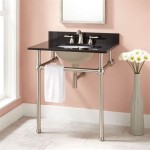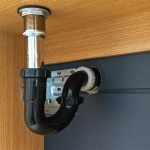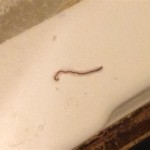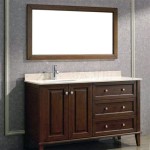Connecting Drain Pipes Under Bathroom Sink: Essential Aspects
When it comes to home plumbing, connecting drain pipes under the bathroom sink is a fundamental task that ensures proper wastewater drainage. Whether you're replacing an old sink or installing a new one, understanding the essentials of connecting drain pipes is crucial to avoid leaks and plumbing issues down the line.
1. Gather Necessary Materials and Tools
Before starting, gather the following materials and tools:
- P-trap (U-shaped pipe that prevents sewer gases from entering the bathroom)
- Tailpiece (short pipe that connects the sink drain to the P-trap)
- Trap adapter (connects the P-trap to the drainpipe)
- Slip nuts and washers (to seal connections)
- Pipe wrench
- Plumber's putty
- Bucket
2. Disconnect Existing Drain Pipes
If you're replacing an old sink, start by disconnecting the existing drain pipes. Use a pipe wrench to loosen the slip nuts that connect the P-trap to the sink drain and drainpipe. Place a bucket underneath to catch any water that may drain out.
3. Assemble the P-trap and Tailpiece
Attach the tailpiece to the sink drain using a slip nut and washer. Then, connect the P-trap to the tailpiece in the same manner. Ensure that the P-trap is positioned correctly to prevent clogging.
4. Connect the Trap Adapter and Drainpipe
Fit the trap adapter onto the P-trap and tighten the slip nut. Connect the other end of the trap adapter to the drainpipe, again using a slip nut and washer. Ensure that all connections are snug and leak-free.
5. Seal Connections with Plumber's Putty
To prevent leaks, apply plumber's putty around the base of the sink drain where it connects to the tailpiece. Press the putty firmly to ensure a good seal.
6. Test for Leaks
Once all connections are made, run water through the sink and check for leaks. Tighten any loose slip nuts as needed. If you notice any persistent leaks, disassemble the connections and reapply plumber's putty.
Tips for Success

How To Install A Pipe From Sink Drain Wall Ehow
How To Install Bathroom Sink Drain Queen Bee Of Honey Dos

How To Install P Trap And Bathroom Sink Drain Piping Easy Installation For Beginners

Bathroom Sink Plumbing Installation Diy Montreal

How To Plumb A Drain Sink Pipes

How To Install The P Trap Under A Sink Dummies

4 Ways To Seal A Sink Drain Pipe

How To Install A Flexible Waste Pipe When The Drain Doesn T Line Up Handyman S Daughter
How To Install Bathroom Sink Drain Queen Bee Of Honey Dos

Bathroom Sink Plumbing Installation Diy Montreal






